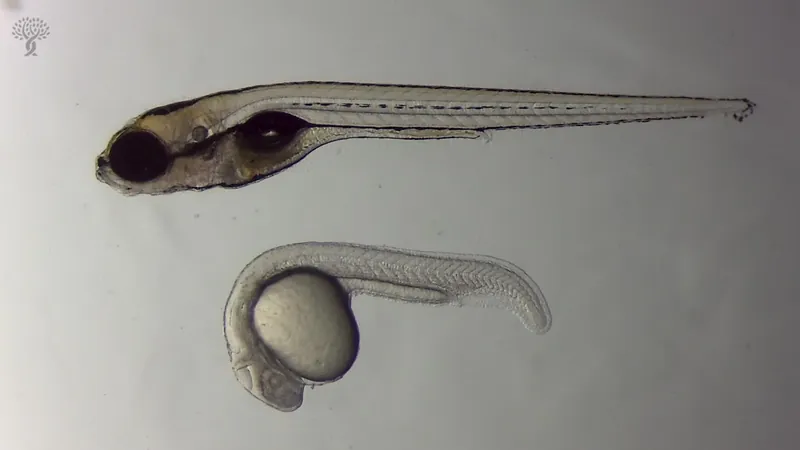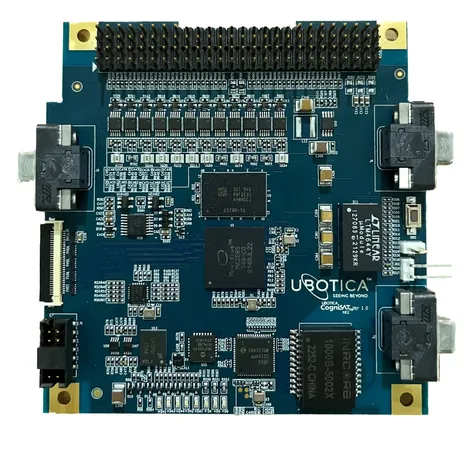
Zebrafish Breakthrough: Could They Pave the Way for Human Hearing Regeneration?
2025-07-14
Author: Siti
A Groundbreaking Discovery in Regeneration Science
Scientists at the Stowers Institute for Medical Research have made a stunning breakthrough in understanding how zebrafish regenerate sensory cells. This groundbreaking research could illuminate new paths for treating hearing loss in humans.
Zebrafish vs. Humans: A Regeneration Duel
Unlike zebrafish, mammals—including humans—cannot regenerate the vital hair cells in our inner ears. As we age or face prolonged exposure to loud noises, we suffer from hearing loss and balance issues. However, the research led by Dr. Tatjana Piotrowski reveals fascinating insights into the biological mechanisms that enable zebrafish to regenerate these cells.
Unraveling the Mystery of Cell Division
The study, published in Nature Communications, demonstrates how two crucial genes control the proliferation of sensory support cells in zebrafish. Understanding these processes could potentially unlock new treatments for hearing impairments in mammals.
Dr. Piotrowski explains, "Cells must proliferate to replace dead or shed ones, but this regeneration only works if there are cells ready to multiply. Knowing how stem cells decide when to divide and differentiate is crucial for advancing regenerative medicine."
Why Zebrafish Are Ideal for Regeneration Research
Zebrafish are transparent during their developmental stages, allowing scientists to visualize and manipulate their sensory organs—called neuromasts. These structures, which harbor hair cells similar to those in human ears, enable zebrafish to sense water movement.
The ability to genetically alter these fish means researchers can delve deep into the mechanisms of stem cell replenishment and cell regeneration. As Dr. Piotrowski notes, "We hope to figure out why mammals aren't able to regenerate the way zebrafish do and explore possibilities for inducing this ability in the future."
Decoding the CyclinD Genes
The researchers identified two types of support cells within the neuromasts: stem cells and progenitor cells. Each type relies on distinct cyclinD genes to regulate cell division and ensure a sustainable supply of new hair cells.
This discovery revealed that each gene could control different populations of cells independently, shedding light on how cell growth might work across various tissues.
Implications Beyond Hearing
The findings aren't just limited to the auditory system. With cyclinD genes playing a role in various human cells, this research could have wide-reaching implications for other regenerative processes in our bodies. Dr. Piotrowski suggests that insights gained from zebrafish could enhance our understanding of regeneration in organs and tissues across the board.
The Future of Regenerative Medicine
As the scientific community holds its breath, the potential for zebrafish to guide revolutionary advancements in regenerative medicine is nothing short of thrilling. This could finally lead to groundbreaking treatments for hearing loss and other ailments in the near future.



 Brasil (PT)
Brasil (PT)
 Canada (EN)
Canada (EN)
 Chile (ES)
Chile (ES)
 Česko (CS)
Česko (CS)
 대한민국 (KO)
대한민국 (KO)
 España (ES)
España (ES)
 France (FR)
France (FR)
 Hong Kong (EN)
Hong Kong (EN)
 Italia (IT)
Italia (IT)
 日本 (JA)
日本 (JA)
 Magyarország (HU)
Magyarország (HU)
 Norge (NO)
Norge (NO)
 Polska (PL)
Polska (PL)
 Schweiz (DE)
Schweiz (DE)
 Singapore (EN)
Singapore (EN)
 Sverige (SV)
Sverige (SV)
 Suomi (FI)
Suomi (FI)
 Türkiye (TR)
Türkiye (TR)
 الإمارات العربية المتحدة (AR)
الإمارات العربية المتحدة (AR)